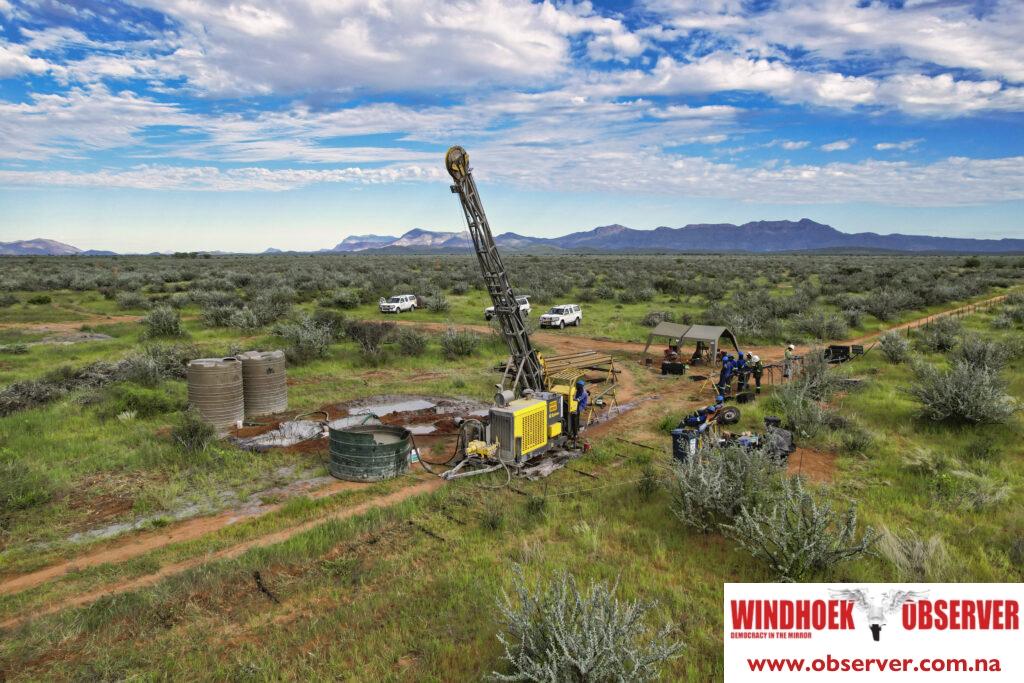Heye Daun, President and CEO of Osino Resources talks to Observer Money about Yintai Gold of China taking over the company, benefits of the deal to Namibia and why Osino accepted the takeover by Yintai Gold.
Observer Money (OM): Yintai Gold is in the process of taking over Osino Resources soon, the deal will of course benefit shareholders in monetary terms but how does it benefit Namibia, will the government benefit in taxes from the deal? We are talking about capital gains tax.
Heye Daun (HD): Namibia has benefited and will continue to benefit from Osino since inception, having attracted approximately C$75 million (N$1billion) in foreign direct investment for the Namibian economy to date, with a further N$7 billion capital investment for the construction of the mine. The Twin Hills project is expected to create more than 1500 direct jobs during construction and probably around 1000 permanent new jobs in the region. 79% local procurement was spent in Namibia, of which a quarter was within 75km of Twin Hills.
The future Twin Hills mine will be taxed under Namibia’s well-established tax code. The financial modelling of the Twin Hills gold project indicates that the Namibian fiscus will receive around 30% of all cash flows emanating from the project, in the form of direct taxes and royalties. This is after the very high capital expenditure plus sunk costs, which has been incurred by shareholders and financiers of the project. In addition to that, the Namibian fiscus will be receiving worker’s income tax and other secondary taxes plus various indirect taxes from the procurement of goods and services. If all of that is added together it indicates that the fiscus will be receiving a very substantial and fair part of the economic returns of this project, without having had to invest any risk capital at all, to turn the project into reality. That is indeed a very good deal for all stakeholders.
OM: Why did Osino accept the Yintai offer even before the gold mine was even developed?
HD: Yintai is a highly credible and well-financed builder and operator of gold mines with the technical skills and financial resources to progress the project through construction and into production. We are very proud to have attracted a company of Yintai’s caliber, thereby securing the future development of Twin Hills, which we believe has the potential to become Namibia’s third and largest gold mine.
Osino is a mining exploration and development company with no income, and we needed a financial investor who was willing to finance the expected US$400 million in capital investment required to construct the Twin Hills gold project. Partnering with Yintai has secured this capital investment which will result in the continued, fast-tracked development of the project. The timing of the sale of the company was thus driven by the need to finance the construction of the Twin Hills project. The transaction is still subject to approval by Namibia’s Competition Commission, which we are currently awaiting.
OM: What do you have to say to those who may feel that Osino, unlike B2Gold, was merely speculating?
HD: The development of the Otjikoto gold project, was preceded by my former company, AuryxGold, developing the project to the feasibility stage, and then bringing B2Gold in as financing and technical partner through the sale of the company to B2Gold, who financed and built the Otjikoto mine. This is a very good example of how the juniors, like AuryxGold (the former owner of Otjikoto), or Osino bring in the foreign risk capital that is required to discover and advance these projects, and once the big capital needed for the construction of the mines is required, these juniors typically bring in major partners. That is the way this business works. In the case of AuryxGold, we had spent close to N$500m before the sale of the project to B2Gold, and in the case of Osino, we have already spent close to N$1 billion for the discovery and advancement of the Twin Hills project. Yintai will need to spend another N$7 billion, more or less, to construct the mine, before it will be producing any cash flows. What we are therefore doing with Yintai is exactly the same process that we followed with B2Gold, which led to the successful development of the Otjikoto gold mine, like it will lead to the successful development of the Twin Hills gold mine. This process has taken me personally, and my Namibian technical team and financial investors more than eight years, from inception of the company, to the development of the project into definitive feasibility study and now the sale to Yintai. This can hardly be termed speculation, but it was pure hard work under very trying circumstances that nevertheless has led to success.
OM: Mr Daun, you were involved with the development of Otjikoto and now Osino, what next, are you still looking for opportunities in the Namibian mining industry?
HD: I am a Namibian citizen and I am motivated to continue to contribute to the development of Namibia’s mining industry, to bring high-quality international investors to Namibia, and to help with the socio-economic upliftment of my country, so yes, once the Osino deal has closed, I will look for new mining opportunities in Namibia or elsewhere.
OM: What is the potential of finding more gold deposits in Namibia?
HD: The potential is there but exploration in Namibia is technically challenging, due to the majority of the country being covered in sand. It is expensive and takes a long time, but with continued involvement of credible and driven entrepreneurs, overseas risk capital and determination, drive, innovation and experience, it is very likely that additional new gold discoveries will be made in the years to come.
OM: What is the future of gold on the international markets?
HD: I am not an economist and thus the wrong person to ask, but I think it is generally accepted that the gold market is on the cusp of a major breakout, driven by the debasement of international fiat currencies, growing public and private debt burdens, the use of gold as a hedge against inflation and ongoing international uncertainty. In addition, with the weaponisation of the US Dollar as a sanctions tool, there is widespread diversification into gold by international central banks, all of which is underpinning the price of gold. All of these factors make for a very positive gold market outlook for the first time in many years.





